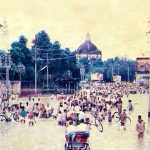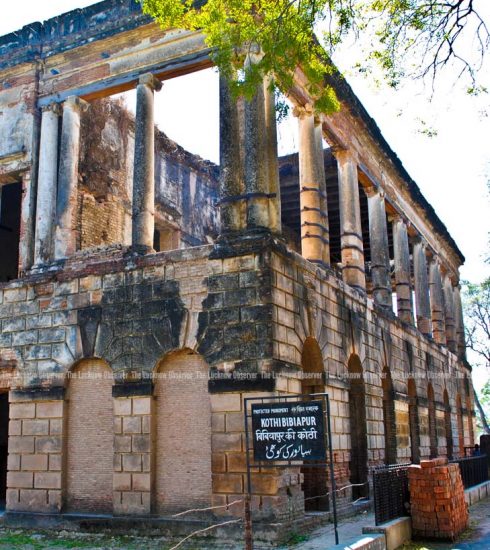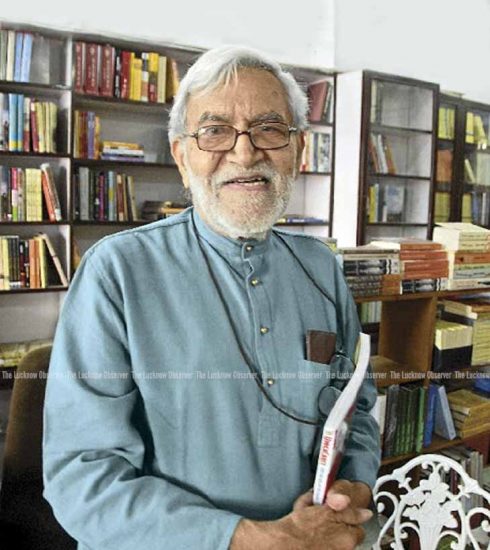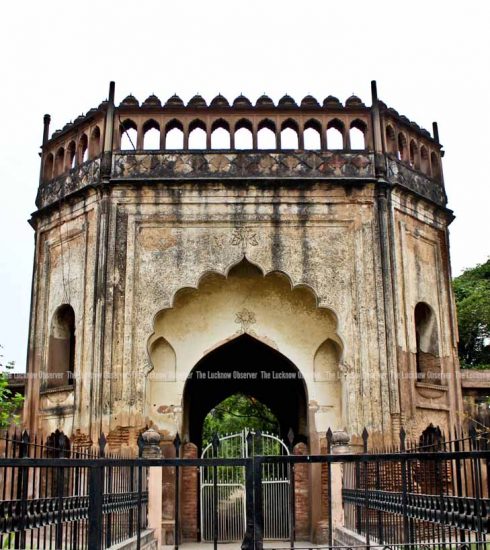Tourism
New Cosmopolitan Phenomenon
“Agar firdous baroye zameen ast, hami asto, hami asto hami ast” – Amir Khusrow
(If there is paradise on earth, it is here, it is here, it is here)
These words describe not only divine beauty of Kashmir but also of the country, which is full of such breathtaking beauties.
Home to the ancient Indus Valley Civilisation and a region of historic trade routes and vast empires, the Indian subcontinent was identified with its commercial and cultural wealth for much of its long history. ‘India is just not a country, it’s an experience’. Similar stories would echo if you move and talk to people across the latitude and longitude of India.
There could be various reason which could never be penned down but usually its spending holidays, leisure, adventure, pilgrimage, curiosity or business. But why do people travel to one place and not the other? We can never get to any conclusion for this question. People generally like a change of scenery if they are going on a holiday. This means that if they live in a large city surrounded by buildings, it is likely that they will want to get outside into the fresh air and enjoy the beach or the countryside. India has plenty of both and is a great destination for people looking to unwind.
Since 1980, the United Nations World Tourism Organization has celebrated World Tourism Day on September 27 every year. This date was chosen as on that day in 1970 and the Statutes of the UNWTO were adopted.
The adoption of these Statutes is considered a milestone in global tourism. Every UN member country celebrates it since then on the theme decided by UNWTO. The theme for 2015 is Community development. This focus in line with the global transition to the Sustainable Development Goals as the guiding principle promoted by the UN from 2015 and beyond.
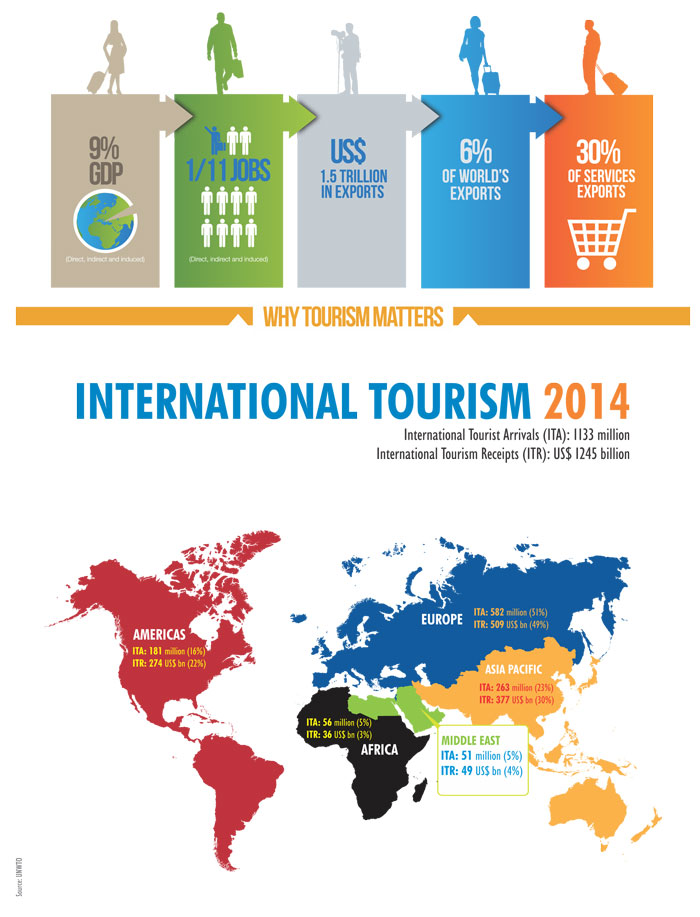
Travel plays a major role in India’s global connections with other places. People who travel for a holiday are usually called tourists. The business of travel is known as tourism. People travel to other countries for many different reasons. It may be for a holiday to the snow or a tropical island, to experience an exciting part of the world, to participate in a sporting event, or to visit relatives overseas. Many people also travel to other countries for business reasons.
An ever-increasing number of destinations worldwide have opened up to, and invested in tourism, turning it into a key driver of socio-economic progress through the creation of jobs and enterprises, export revenues, and infrastructure development.
Over the past six decades, tourism has experienced continuous expansion and diversification, to become one of the largest and fastest-growing economic sectors in the world. Many new destinations have emerged in addition to the traditional favourites of Europe and North America.
Despite occasional shocks, tourism has shown virtually uninterrupted growth. International tourist arrivals have increased from 25 million globally in 1950, to 278 million in 1980, 527 million in 1995, and 1133 million in 2014. Likewise, international tourism receipts earned by destinations worldwide have surged from US$ 2 billion in 1950 to US$ 104 billion in 1980, US$ 415 billion in 1995 and US$ 1245 billion in 2014. Long-term outlook.
International tourist arrivals worldwide are expected to increase by 3.3% a year between 2010 and 2030 to reach 1.8 billion by 2030, according to UNWTO’s long term forecast Tourism Towards 2030.
Between 2010 and 2030, arrivals in emerging destinations (+4.4% a year) are expected to increase at twice the rate of those in advanced economies (+2.2% a year).
The market share of emerging economies increased from 30% in 1980 to 45% in 2014, and is expected to reach 57% by 2030, equivalent to over 1 billion international tourist arrivals.
International tourism in 2014 – key trends and outlook
International tourist arrivals (overnight visitors) increased by 4.3% in 2014, reaching a total 1133 million after topping the 1 billion mark in 2012.
The America’s recorded the strongest growth with an 8% increase in international arrivals, followed by Asia and the Pacific and the Middle East (both +5%).
France, The United States, Spain and China continue to top the rankings by both international arrivals and receipts. Mexico re-entered the Top 10 by arrivals at position 10. By receipts, China and The United Kingdom both moved up to two places, to 3 and 7 respectively.
China, the world’s top tourism source market, has continued its exceptional pace of growth, increasing expenditure abroad by 27% in 2014 to reach a total of US$ 165 billion.
Forecasts prepared by UNWTO in January 2015 point to a 3% to 4% growth in international tourist arrivals in 2015 ñ in line with the Tourism Towards 2030 long-term forecast of 3.3% a year.
By UNWTO region, prospects for 2015 are strongest for Asia and the Pacific, with India leading the flock and the Americas (both +4% to +5%), followed by Europe (+3% to +4%), the Middle East (+2% to +5%) and Africa (+3% to +5%).
In 2015 growth is expected to continue at a sustained rate of 3% to 4% worldwide by UNWTO region, prospects for 2015.
In 2014, there were over around 263.0 million international tourist arrivals to Asia and the Pacific, an increase of 5.0% over 2013. (As per data from UNWTO and Official Indian Tourism Stats , single day visitors are excluded)
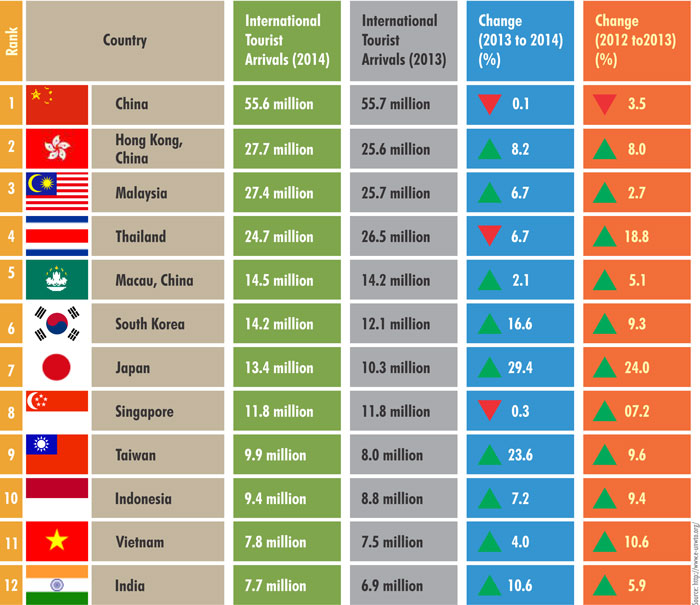
Evident from the graph with India showing a growth of more than 10% between 2013-2014 and countries with lower GDP attracting more tourists, there is immense scope of developing the tourism sector in India.
Asia and the Pacific ñ healthy growth with few exceptions.
In 2014, Asia and the Pacific welcomed 263 million international tourists, 14 million up from 2013 (+5%). The region earned US$ 377 billion in tourism receipts, up by US$ 16 billion over 2014 (+4% in real terms).
Asia and the Pacific accounts for 23% of worldwide arrivals and 30% of receipts. By subregion, North-East Asia and South Asia (both +7%) recorded the strongest growth in terms of international tourist arrivals.
South Asia (+7%) posted strong results driven by the subregion’s largest destination India (+11%), Sri Lanka (+20%) and the Maldives (+7%).
The efforts in India are in line with the UNWTO theme of “community development” this year:
Many people from overseas come to India to experience our ancient places, beautiful beaches, see our unique culture, and of course, meet the friendly locals. Each year, thousands of Indians travel overseas and hundreds of thousands of tourists visit India.
Most of our visitors come from Europe, The United Kingdom, Japan and The United States.
The Ministry of Tourism, Government of India, with its 14 overseas offices, endeavors to position India in the tourism generating markets as a preferred tourism destination, to promote various Indian tourism products vis-‡-vis competition faced from various destinations and to increase India’s share of the global tourism market.
India can surely make strategies keeping cultural and archaeological tourism in focus as we have a plethora of such things to showcase across India.
In order to boost tourism numbers, Indian Government decided to implement a new visa policy, allowing visitors to obtain a visa on arrival at 16 designated international airports by obtaining an Electronic Travel Authorization online before arrival without the need to visit an Indian consulate or visa center. The facility will be made available to citizens of about 180 countries in several phases. On November 27, 2014, India introduced its visa on arrival.
The Travel & Tourism Competitiveness Report 2013 ranks India 65th out of 144 countries overall. The report ranks the price competitiveness of India’s tourism sector 20th out of 144 countries. It mentions that India has quite good air transport (and ranked 39th for transportation), particularly given the country’s stage and state of development, and reasonable ground transport infrastructure (ranked 42nd). Some other aspects of its tourism infrastructure remain somewhat underdeveloped however. Still, much remains to be done on the part of transportation infrastructure to ease the travel.
Statistical data is important tool for the planners and policy makers not only for planning/ policy formulation but also to monitor the progress of the schemes and evaluating their impact. The Ministry of Tourism brings out an Annual Publication called ” India Tourism Statistics ” every year giving details of international and domestic tourism. And Market Research Division of Ministry of Tourism compiles data on domestic and foreign tourist visits to States/Union Territories (UTs) received from Departments of Tourism of various State Governments and UT Administrations.
The top ten States in terms of number of domestic tourist visits (in millions), during 2014, were (1) Tamil Nadu (327.6), (2) Uttar Pradesh (182.8), (3) Karnataka (118.3), (4) Maharashtra (94.1), (5) Andhra Pradesh (93.3), (6) Telengana (72.4), (7) Madhya Pradesh (63.6), (8) West Bengal (49.0), (9) Jharkhand (33.4) and (10) Rajasthan (33.1).
The top five States in terms of number of Foreign Tourist Visits (FTVs) (in millions) during 2014 were (1) Tamil Nadu (4.66), (2) Maharashtra (4.39), (3) Uttar Pradesh (2.91), (4) Delhi (2.32), (5) Rajasthan (1.53).
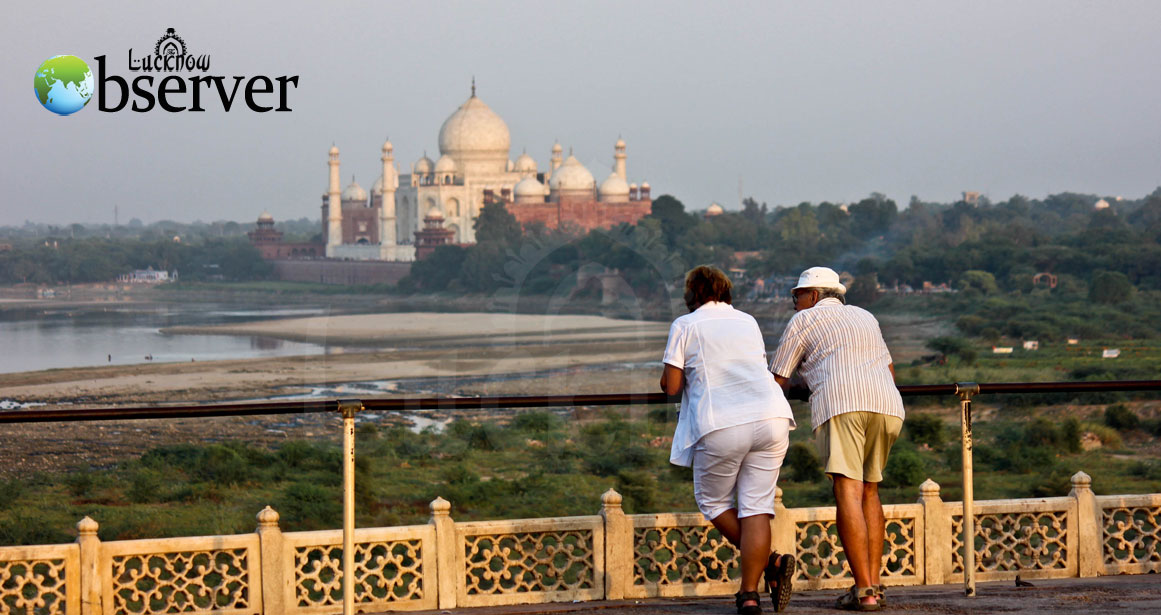
Uttar Pradesh Tourism : Why 3rd ?
Actually the question is wrong. The question is not about the race to become number 1 amongst Indian states. The question is what more can be done to attract more tourists in the land of Taj Mahal, Ganges, Lord Rama, Lord Krishna, the famous Nawabs of Lucknow and the epicenter of Revolt of 1857 after losing Mussourie and Nainital to Uttarakhand.
You should be thinking, what’s the problem? UP is already third ranked amongst foreign tourists. Mrs Minakshi Lal, 35, entrepreneur born and educated at Lucknow, blames it to “will issue”, that we were lacking in our focus on developing tourism in UP. It is being taken care of very well now and should continue like this to make UP popular on the trotters map.
UP is the largest state of India in terms of population. UP is the third most visited state in the country with total no of foreign visitors being 2.9 million.
Recalling an interactive session with Mr. Amrit Abhijat, Director General and Secretary of UP tourism things seemed to be very positive in the days to come. One of the best part talking to him was that his involvement with the issues of tourism was evident in his elated words, positive body language usually lacking in government officials, and his efforts have already started showing up.
He told us “with projects like Lucknow-Agra Express Highway, The Heritage ARC, Lucknow Metro Rail, Tourism Roads by PWD, Taj Car Rally, Mera Agra and Heritage-Walk at Lucknow will change the scenario positively both for domestic and foreign tourists to UP. Chambal and Etawah safari are also picking-up, falls of Mirzapur and Orchha are popular with locals of the area without good infrastructure to support influx of tourists.”
Although one cannot reason out why do people visit one place and not the other. Among many, one of the priority reasons is pilgrimage. A lot is being talked about Sufi circuit to be developed while Buddhist circuit already exists and UP has its valuable share in it in Sarnath and Kushinagar. Indian railways already run a Buddhist circuit train.
In relation to this Mr. Rakesh Tiwari, Director General of ASI once quoted that foreign tourists mainly visit to places related to religion so UP government will have to improve basic amenities and facilities that are tourist friendly. He explicitly mentions to focus on places near Lucknow like Shravasti and Naimisharanya, so that Lucknow would fall en route.
Lucknow would also be benefitting through The Heritage ARC project. In very brief this ARC would be connecting Agra-Lucknow-Varanasi, the cynosures of tourism in UP. Agra, having Taj Mahal is already center of attraction being one of the seven wonders of world. Varanasi is famous for faith and religion associated with Lord Shiva and the tranquility associated with Ganges.
“Oh my God!!! someone pinch me please. Am I alive. Oh my God. This is my dream come true. Ganges, temples and boats. Wow. I don’t believe this that I am seeing it for real”!!! Sitting on the steps to the bank of river Ganges at one of the Ghats at Varanasi I heard this shrieking exclamation by western tourist after seeing the Ganges for the first time. I myself was sitting mesmerized feeling the same but didínt exhilarate similarly, being an Indian.
Such is the attraction of Varanasi among western tourists and who flank in lots to Agra and finding easy connectivity from Agra to Varanasi would make them travel the Arc, Lucknow benefitting by its position in the arc being centrally located and for the uniqueness of Lucknow being architecture, cuisine, mannerism, and chikankaari.
In the alley’s of Varanasi near Ghats you can find westerners rubbing shoulders with localites cherishing samosa’s and jalebi. There is nothing unique in them but they explore and same can be the scenario here in Lucknow. This could be made possible with the implementation of plans been made for tourism at micro level as told by Mr. Amrit Abhijat.
‘The Heritage ARC’ is already a global brand. Lucknow has to be established as the global brand, which is being tried by herculean efforts being done right now and we can expect positive results in the coming time for sure.
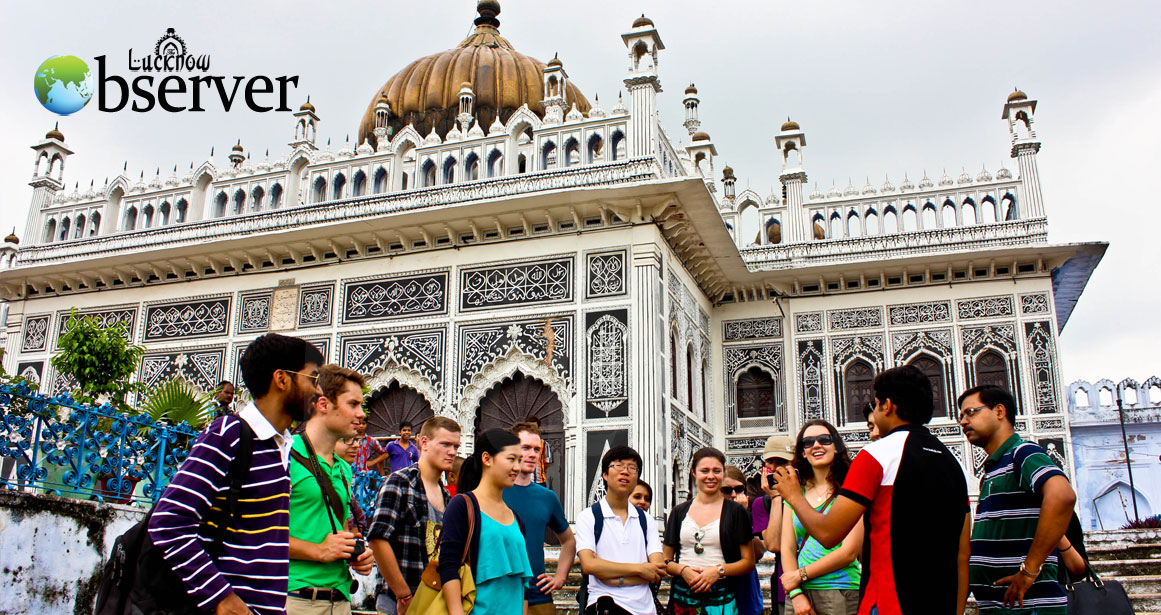
Tourism in Lucknow: Challenges
But we cannot just get satisfied with efforts being made to pep-up tourism in UP and specifically, our Lucknow. We need to get to the desired results for which first of all ASI has to wake up and start working for the name and respect of the nation. There are many monuments coming under the ambit of ASI and are dying slow death, what to speak of buzzing with tourists.
Encroached Monuments in the city
- Bada Imambada (residential and commercial) 8 shops and some 6 families reside in the premises. Hussainabad Trust coughs up the revenue.
- Asafi Masjid (residential) Underground cells of the mosque encroached by locals.
- Rauza-e-Kazmain (residential) 30-odd families living inside the premises.
- Shahnajaf Imambada (residential) Occupied by ex-trustees and family members. Primary school is also running.
- Picture Gallery (Residential) Office of the Hussainabad trust. A school running on the first floor.
- Amjad Ali Shah Tomb-Sibtainabad (residential and commercial) Side wings in the premises and first-second gateways allotted by Lucknow Improvement Trust (now LDA) for residential and commercial purpose.
- Qaiserbagh Gate (residential) inhabited by tenants.
- Dargah Hazrat Abbas (residential and commercial) several families residing inside the premises and building portion also houses some shops.
- General Wali Kothi and Office of the Nagrik Suraksha Niyantrak
Other Monuments encroached for residential and commercial purposes
- Cemetery at Kaiserpasand, Qaiserbagh
- Kalan-ki-Lat at Aminabad
- British Cemetery at Sapru Marg
- Two Cemeteries at Lucknow-Faizabad road, miles 4&5.
- Tomb of Janab-e-Aliya, Golaganj
- Jama Masjid, Hussainabad
- Tahsin Ali Masjid
- Neil’s Gate
- Karbala Talkatora
- Dianut-Daula Karbala
- Malka Jahan Karbala
- Nasir-ud-din Haider Karbala
- Nagram Mound
- Paharnagar Tikuria Mound
- Sikchawali Kothi
(Source- ASI Lucknow as per the list of encroached monuments)
Although a lot of locations need attention but these monuments needs to be taken care of:
- Nadan Mahal: The oldest surviving monument of Lucknow is also the most ignored historical monument of Lucknow.
- Ruins of Musa Bagh: The premise is used for morning routines by the localites.
And there are places of tourism importance where one cannot even take pictures obviously because the neglect will go out of premises as a proof. Just to mention places where we were not allowed to take pictures –
- Aliganj Cemetery
- Cemetery at Mohibullapur
- Vilayati Bagh at Dilkusha
- Jarnail Kothi
Not only this, to be more truthful, actually we were man handled by the caretaker present at the Mohibullapur Cemetery. Where common localities are not allowed to take photographs, how do you think tourism will develop ever here?
Talking to Prof. S.B.Nimse, Vice-Chancellor, University of Lucknow about the Heritage sites within the premises of the University namely Badhshah Bagh Gates and Lal Baradari which are in dilapidated state right now, he said that request has been made with administration and he would be further scaling up the issue with Chief Minister Mr. Akhilesh Yadav who also handles the tourism portfolio of Uttar Pradesh. Further he wished that he wanted to develop both these places as popular tourist spots so that whoever visits Lucknow has both these places on their sight-seeing agenda.
All is not well under the state government too. The Kothi Alamara, Alambagh was renovated by state government but just to cover up the ugly face. You can see the reality of the face as you go near it. It’s wrinkles and dirt all over. And finally, Lal Baradari is under renovation, which was long due. Let’s hope for good results after the renovation.
Given the right value for money, people are willing to try out new exotic, distant, ancient or absolutely new locations. So whether at city, state or country level if people from tourism industry just focus on ìPEHLE AAPî courtesy and pertain to changing demands of tourists, the Ancient Indian proverb of VASUDHAIV KUTUMBKUM: world is one home will stand tall and true.
In Conclusion Tourism is not a department to be handled lightly now, in last 4 decades it has become serious business. Bona fide professionals, historians, pilgrims, artisans, cultural intellectuals, artists, globe trotters, students holidaying families, adventure seekers all contribute to its growth. Apart from providing basic infrastructure of travel and accommodation, safety and cleanliness, comfort and luxury are new parameters now. Tourists in this digital age are very well researched and look for value for money.
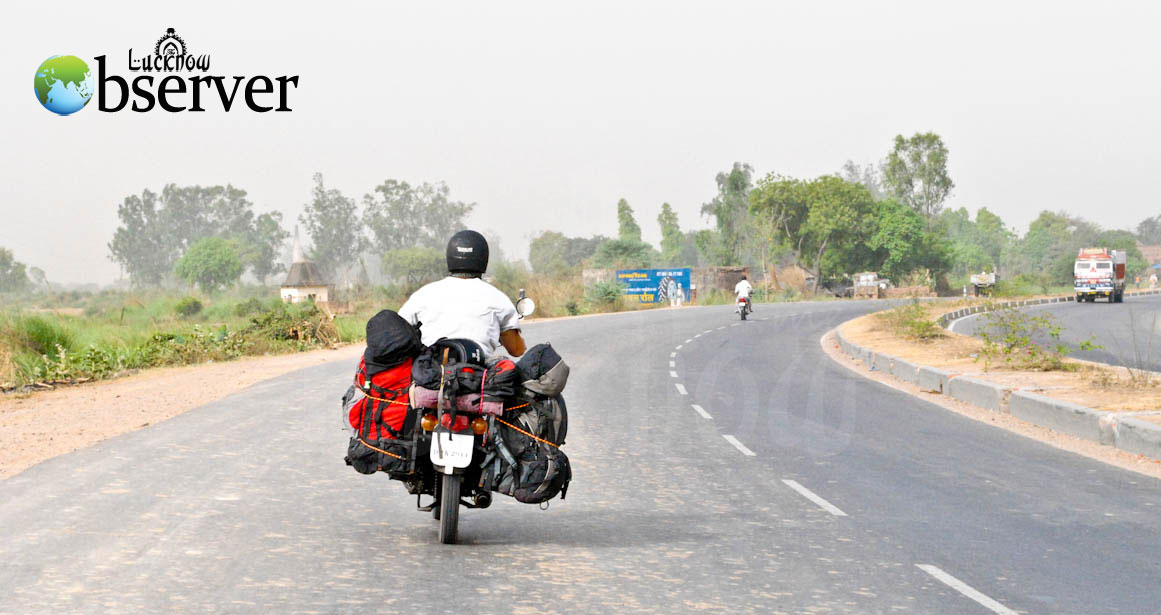
Feedback from few Hospitality and Travel professionals, here are few point that come out that might take things a Way Forward:
Long Term and Short Term Measures to promote Indian Tourism
Short Term Measures:
- Organise focused Familiarization tours for media persons and tour operators.
- Proper updation and knowledge transfer to front office executives who are in direct contact with prospective travellers so as they can handle all queries on latest developments.
- Though enough publicity material is there, it is not in accordance to changing needs and demands of new age travelers. Frequent survey are very helpful to understand changing mind set.
- New destinations, new products, new packages, new circuits and new luxury properties need to be promoted alongside well known destinations, so that every time a prospective or planning tourist find value for money in same price range.
- Innovative methods of promotion need to be introduced, for example, promotion on search engines and social networking sites which have immense reach irrespective of the geography. Digital and Internet marketing is now new mantra for expansion and garnering new consumer, so dedicated effort online along within offline activities should be crux of overall effort.
- Frequent interaction with tour operators ñ to remain connected.
Long Term Measures:
- More focus on product/destination campaigns required for different set of travelers. Products for specific countries should be designed based on the needs and requirements of travelers from that specific geography.
- Rather than sending brochures etc., fortnight updates on latest developmentñevent, launch, festival etc. should be apprised.
- Endorsement by local celebrities of the target country to give trust and credibility to the promotional efforts.
Shamim A. Aarzoo
(Published in The Lucknow Observer, Volume 2 Issue 18, Dated 05 September 2015)




